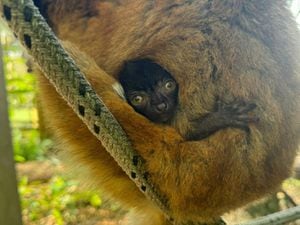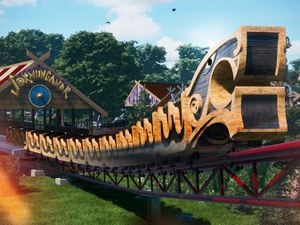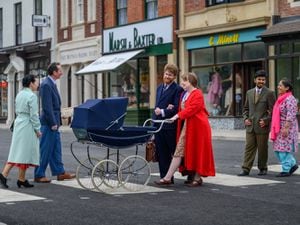The Black Country treasures that made Geopark dream a reality
It has taken years of hard work and could fire the Black Country’s economic recovery from the coronavirus.
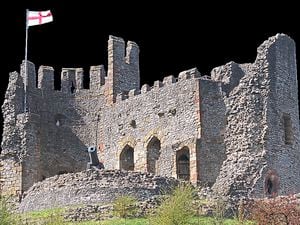
Unesco’s decision to award geopark status to the region is a big deal in every way you look at it, from the huge potential to increase visitor numbers to the added opportunities for preservation and conservation.
After a decade-long project backed by Wolverhampton, Dudley, Walsall and Sandwell councils, the Black Country was last week named one of 15 new global geoparks, joining a network of areas around the world recognised for active partnerships to conserve, manage and promote local geology and heritage.
It is the eighth in Britain, joining the likes of Fforest Fawr in South Wales, the Shetland Islands and the North Pennines.
There are now 161 sites in 44 countries around the world, including Spain’s Basque coast, the Alxa Desert in China and Haute-Provence in south-eastern France.
The Black Country’s role in the Industrial Revolution was at the heart of the bid’s success, with Matthew Lodge, UK Permanent Delegate to Unesco from the Foreign Office, declaring that the region had “shaped the modern world”.
It is without doubt a prestigious accolade, which leaders across the region will hope can reap rich rewards in the coming years.
Map of Black Country geosites:
The United Nations Geopark project – launched in 2000 – began with the aim of shining a light on the unique characteristics of certain regions across the world.
The benefits can be wide-reaching, and geoparks contribute to conservation, education and crucially, promote sustainable development through geotourism.
Make no mistake, it is a coveted title, and each year hundreds of areas around the world submit detailed proposals for geopark status.
The Black Country’s application was first submitted in 2016 after years of planning.
The following year, after assessing the application, the Unesco Global Geoparks committee made a number of recommendations and gave the project a further two years to address them before resubmitting a final application. It is not an honour that is bestowed readily, but with the status now official, thoughts have turned to the potential boost to the region’s economy it may bring – something which could prove to be vital as the Black Country attempts to get back on its feet in the wake of the coronavirus pandemic.
The region currently generates more than £1 billion a year through tourism, with visitor numbers rising year-on-year over the past decade to sail past 25 million annually.
However, it is a widely held view that the region could do more to promote its many historical attributes, and achieving geopark status may be the perfect chance to do just that.
Despite the decade of planning and high level discussions behind the scenes to get to this stage, organisers are fully aware that the hard work starts now.
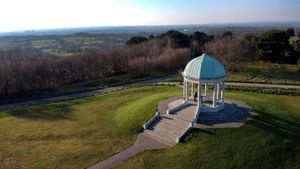
Busy times lie ahead, with plans already being considered over how best to promote the region under its new status.
In a bid to boost tourism in the region, a ‘Black Country Geopark Way’ is set to be launched, connecting many of the 40 the sites together along a route for cyclists and walkers.
Organisers are also keen to increase recognition of some of the region’s key heritage sites, and with the pandemic not yet behind us, virtual tours of geosites are likely to be developed.
Graham Worton, Black Country Unesco Global Geopark project coordinator, said: “One of the very first pragmatic things we’ll be looking at is beginning the roll-out of Unesco Global Geopark branding across the sites and updating all of our online and printed resources with this.
“In the background there has also been a lot going on with project ideas. These can now move forward a bit more confidently.
“These include things like a ‘The Black Country Geopark Way’ – a long distance walking and cycling route that connects many of the sites together via a waymarked route that threads between them along canal towpaths, old railway lines and cycle lanes.
“We will also be looking to add value wherever we can to heritage areas like the Glass Quarter bringing in more storylines and helping with things wherever we can.
“Over the next few months and years we’ll also be supporting the improvement of visitor infrastructure and information at key visitor ‘nodes’ and nature reserves like Saltwells and Wrens Nest here in Dudley.

“Also,as we are a bit limited by the pandemic at the moment, we’ll be looking to produce virtual tours of Geosites (including wherever we can 3D virtual reality versions like the one we’ve done of the new Dudley Museum.”
Mr Worton said in the immediate future they were keen to push a landmark event for one of the Black Country’s jewels in the crown.
“I think another thing that we really want to support if we can for Dudley is the 950th anniversary of Dudley Castle,” he said. “Discussions are ongoing at the moment for an online event of some sort.”
Tourism chiefs across the region see the awarding of Geopark status as a great opportunity to attract visitors to the Black Country.
It comes at a time when transport links are being improved, including new Metro and rail lines and the opportunities that come with HS2.
And with the West Midlands likely to suffer as badly as anywhere in the UK from the financial hit from the coronavirus, tourism and hospitality could prove to be key drivers in kickstarting the region’s recovery.
Destination Wolverhampton and The Black Country, a business group committed to making the region “a destination of choice”, said the new geopark status could really put the Black Country on the map.
Founder and director, Jan Denning, said: “This recognition is a major key to help unlock leisure and business tourism for our region. Now is the time to work together in true collaboration to ensure the whole of our region has a share of the £106 billion tourism industry.”

As part of the Black Country’s new status, 40 geosites have been identified, including museums, nature reserves, woods, bridges, waterways and walking routes.
They were selected from a long list by a partnership of local authorities and agencies such as the British Geological Survey, Natural England, and The Canal & River Trust to meet specific criteria.
Crucially, each site must fit the remit of defining the “geological heritage” of an area.
According to Mr Worton, the overriding purpose of a geopark is to champion the natural environment, provide inspirational and educational opportunities for learning about the planet and the environment and to boost tourism.
In particular this means promoting the region’s hidden gems that may not be at the top of the existing tourism offer and may find it harder to survive and flourish, he says.
The Black Country project has also ensured that geosites are scattered around the region, in the hope that visitors will find their way to areas which need support the most.
Mr Worton said many of the sites had played a vital role in their communities during the coronavirus lockdown.
He said: “Recently these local places have been a really important resource too for folks who couldn’t travel anywhere else, and perhaps wouldn’t have known what was nearby had we not been promoting them together in the Geopark project, so hopefully they’ve already helped a few people in the well being end of things too.”
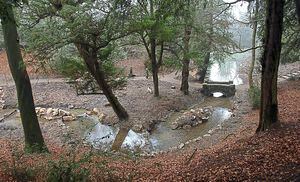
The current ‘top 40’ includes well known sites such as Wolverhampton’s West Park, Walsall Arboretum, Dudley’s Castle Hill with its zoo and surrounding woodland, the Red House Glass Cone in Stourbridge, and Sandwell Valley Country Park.
Many people in the region will be well aware of the stunning views available from Barr Beacon, a site of exceptional importance due to its location next to one of the great geological faults that runs through the Black Country.
And The Leasowes – with its famous garden designed by the poet William Shenstone – is considered one of the most important and influential British landscapes of the 18th century.
Among the lesser known spots is Norton Covert, a naturally re-vegetated abandoned sand and gravel pit. It is considered important to the story of the Black Country as it is the only site that provides exposures of Quaternary, Devensian stratified outwash sands and gravels.
There is also the Stafford Road cutting – a long exposure of Triassic rocks running between two railway bridges to the north of Wolverhampton city centre; and Galton Bridge in Smethwick, which was built by Thomas Telford in 1829 and served as a major canal and railway transportation corridor during the region’s industrialisation.
The list also features the Dudley Canal & Tunnel Trust, which saw its famous caverns reopen last week after lockdown. Dudley North MP Marco Longhi, who attended the reopening, said: “These last few months have been a real challenge for many businesses including our world-leading tourist attractions such as the caverns.
“Nowhere in the world has anything like this and we should be very proud of how the trust has helped safeguard this for future generations.

“I look forward to working with the trust to help build on its potential and take full advantage of the new status for our area.”
The list of Black Country geosites will not end at 40.
As a large territory, the Black Country is required by Unesco to increase its offer over time, meaning other sites are likely to be added.
Full list of Black Country geosites:
Dudley Museum at the Archives (Geopark headquarters)
Wren’s Nest NNR
Barr Beacon LNR
Saltwells LNR
Barrow Hill LNR
Moorcroft Wood LNR
Cotwall End LNR
Sedgley Beacon
Bantock House Museum
Dudley Canal & Tunnel Trust
Brownhills Miner Monument
Bumble Hole & Warrens Hall LNR
Galton Valley & Bridge
Sandwell Valley Country Park
Wolverhampton West Park
Walsall Arboretum
Castle Hill zoo & woodland
Red House Glass Cone
Walsall Art Gallery
Wolverhampton Art Gallery
Wednesbury Museum & Art Gallery
Blue Rock Quarry
Shire Oak Quarry
Norton Covert
Leasowes Park
Northycote Farm
Hay Head Quarry
Wychbury Hill
Park Lime Pits Local Nature Reserve
Wightwick Wedge and Smestow Valley
Barnford Hill Park
Buckpool and The Leys Local Nature Reserve
Compton to Tettenhall Ridge
Coseley Canal Cutting and Tunnel
The Rowley Hills
Coombswood Valley
Bromsgrove Road Cutting Halesowen
Stafford Road Cutting Wolverhampton
Ketley Quarry, Kingswinford
Holloway Street Sandstone Quarries


